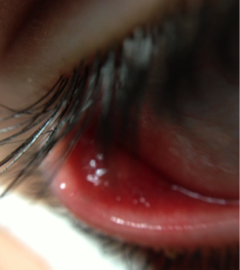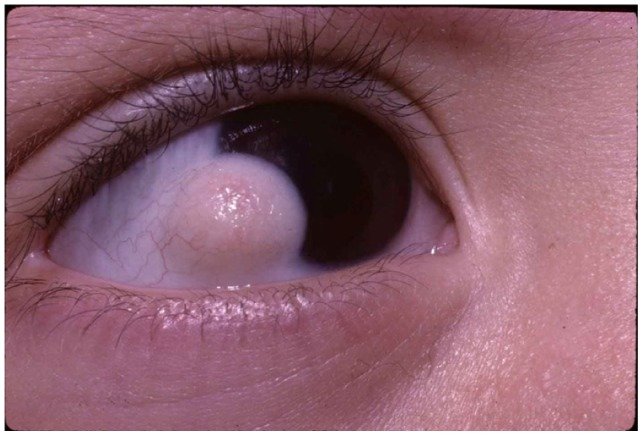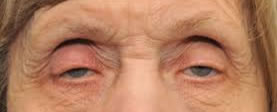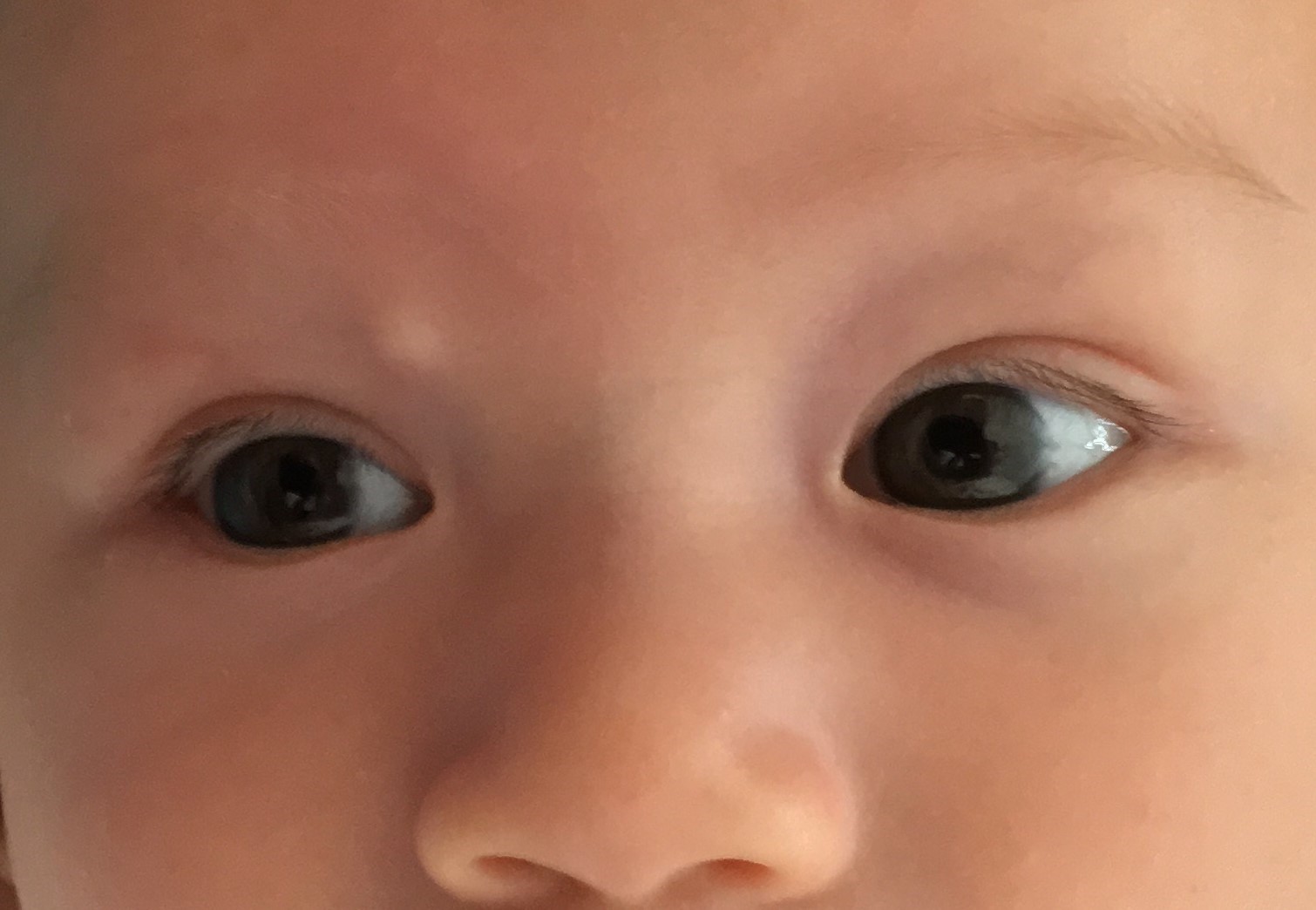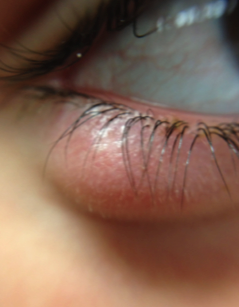
A Common Eyelid Lesion You All Manage
Case Study: A Common Eyelid Lesion You All Manage
Dr Charles Su
Here is a lesion of the lower eyelid photographed from the skin side, as well as with the eyelid everted.
The patient is a 25 year old woman, otherwise well, and has had the lesion for 7-8 weeks. It enlarged to this size over a week, and has stayed roughly the same since. It is not painful, not tender, and the rest of her eye exam, including visual acuity, is normal.
What is the most likely diagnosis ?
a) Chalazion
b) Basal Cell Carcinoma
c) Insect Bite
d) Stye
Click here for answer
Chalazion is the likeliest diagnosis. There is no lash loss, telangiectasia, ulceration, nor distortion to suggest a Basal Cell Carcinoma at this stage. A true stye is an abscess of the eyelash follicle, whereas this process is a chronic lipogranulomatous reaction to secretions of the Meibomian glands ( posterior to the lashes). An insect bite leading to a lump is possible, but is more likely to have a greater degree of inflammation (including pain, redness, and heat, and possibly, itch, if there is a component of an allergic response) at some point, especially early on in its history, and is less likely to last so long.
What management measures would you commence ?
a) Oral antibiotic, Topical antibiotic ointment, hot compresses
b) Antibiotics alone
c) Hot compresses alone
d) Refer for surgical excision
Click here for answer
The underlying cause is trapped sebaceous secretions. A chalazion which is not red and warm and tender is unlikely to have a significant bacterial infection as a cause. Hence, antibiotics do not have a definite role in its treatment. Heat and massage, to encourage the lesion to discharge itself, alone, is an appropriate first measure. The hot compress needs to be applied for 5 minutes twice a day, each time followed by a gentle massage of the lesion by rolling a finger over it. Hence, a microwaved heat pack is best, as a hot face washer loses its heat quickly and needs to be reheated several times, an inconvenience which leads to non-compliance. Generally, to aim for a level of heat which is uncomfortable without being painful is sufficient. The heat pack need not be one specially shaped for eyelid use. Surgical intervention is undertaken for chalazia which fail to improve with conservative measures. It consists of incising the lesion to drain its contents and curetting the inside of the lesion to further empty it of its contents. If the lesion shows any atypical features, such as lash loss or telangiectasia, then intervention would be undertaken earlier to allow a biopsy. There are chalazia which are associated with signs of bacterial infection and eyelid cellulitis, requiring antibiotics, but this one does not display those features.
What other conditions do you need to keep in mind as serious possibilities ?
a) A malignant tumour
b) Orbital cellulitis
c) Preseptal cellulitis
d) Dermoid cyst
Click here for answer
A dermoid cyst is usually noticed at or close to birth, as it is a congenital structure. This lesion has no spreading redness and no pain, which makes cellulitis not a real possibility at this stage. Neoplasia, however, can mimic many different lesions, and it is important that any lesion, even if it seems to be a typical chalazion, is not left alone if it fails to behave as expected. Hence a chalazion which does not respond to the measures above needs to be biopsied to look for evidence of malignancy. Sebaceous Carcinoma, which is a potentially life threatening condition, is well known to mimic chalazia and blepharitis, and even lymphoma can present as a discrete lump in the eyelid.

